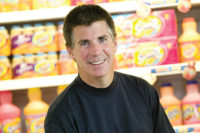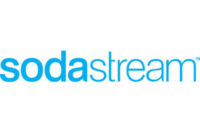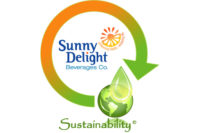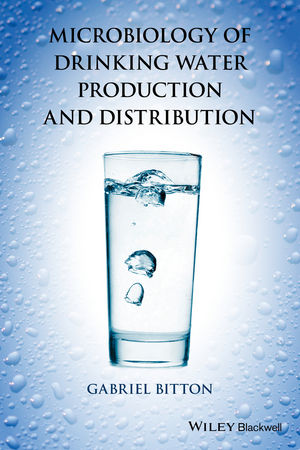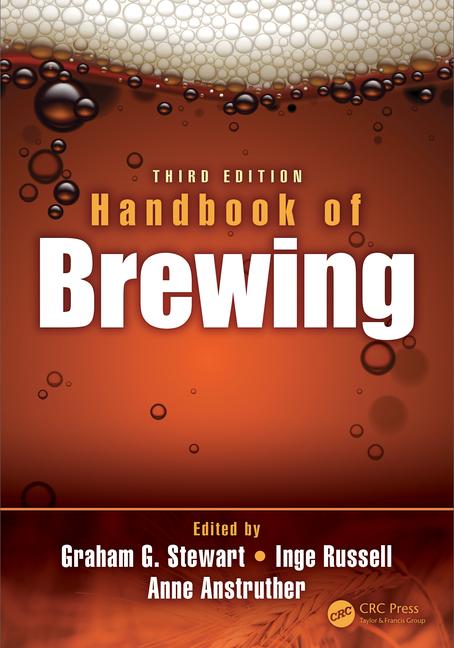In 2007, Sunny Delight Beverages Co. (SDBC), Cincinnati, began to synergize its existing lean manufacturing initiatives to align with the emerging sustainability movement. The following year, the company announced a three-pillared approached to sustainability, which included initiatives in economic, environmental and social goals.
Among its production goals were 25 percent reductions in water usage, electricity consumption and carbon footprint for its manufacturing facilities in Anaheim, Calif.; Atlanta; Littleton, Mass.; Sherman, Texas, and South Brunswick, N.J.
In the years since, SDBC has made progress on each of the goals, with some of its manufacturing sites meeting or exceeding the benchmarks, says Ellen Iobst, senior vice president of global manufacturing and innovation for SDBC.
The company’s Anaheim production facility, which produces SunnyD beverages for the states west of the Rocky Mountains, exceeded the water reduction goals with a 33 percent decrease, says Keith Teeuwen, SDBC’s Anaheim plant manager. The California facility also is on pace with energy reduction, reporting a drop of 19 percent, he says.
Company-wide, each of its manufacturing plants achieved the goal of zero waste to landfill (see sidebar on page 41). In Anaheim, the plant recycles 95 percent of its waste with 5 percent going to composting or cogeneration, which is typical of the company’s plants, Teeuwen says.
The Anaheim facility produces 110 million bottles of SunnyD a year on its three lines. One is dedicated to gallons, another runs assorted large sizes and the third produces small sized packages. Its gallons and large sizes run at speeds of about 100 packages a minute, Teeuwen says. Its small size line can run 800 200-ml. bottles a minute, along with producing 333-ml. and 16-ounce bottles as well, he says. The plant operates on a three-shift, five days a week schedule with about 80 employees.
SDBC ships 95 percent on time to its customers, and it does that with two to four days of finished product inventory of chilled SunnyD and two weeks for its shelf-stable brands, Iobst says. The company keeps inventory low by planning production on 24- and 48-hour schedules, Iobst says.
Production upgrades
In addition to its corporate sustainability goals, late last year SDBC announced a $70 million investment to improve its network of production facilities in North America.
“We’re taking this opportunity with doing this innovation to make improvements in the plant to get some efficiencies, less waste, less energy demand and less water loss,” Iobst says. “So it’s kind of a marriage of innovation and operation.”
The investment includes upgrades as well as the acquisition of the plant in Sherman, Texas, where it had previously leased space for production since 2004.
Billy Cyr, president and chief executive officer of SDBC, described Sherman as being a marginal, or bubble, facility due to the lease agreement. However, when the previous owner, The J.M. Smucker Co., decided to leave the facility, SDBC re-examined the role the Texas plant played in its production.
The company found that geographically, the Sherman plant provided a strategic location to serve its customers, including Wal-Mart and San Antonio-based grocery store chain H-E-B. SDBC is reinvesting in the Sherman facility to make it a state-of-the-art plant with upgraded equipment, including high-speed production lines, Cyr says.
SDBC also formed an agreement with plastics processing company Alpla Inc. to provide on-site bottle manufacturing for the SunnyD beverages produced at the Sherman plant. The agreement is the company’s first partnership to bring plastic bottle manufacturing on-site. It also opens the possibility to expand Sherman’s production options, Cyr says.
“We have the opportunity to grow the business there,” he says. “Right now, we produce products in our facility in Littleton, Mass., that we acquired from Veryfine, but we’re shipping from Massachusetts all the way across the country for the Fruit2O and the Veryfine businesses. Ultimately, the Sherman facility now has the capacity to produce Fruit2O and Veryfine, if the customer base is developed that would require us to have a second production facility.”
In addition to the acquisition of the new plant, the company is investing in improvements across its supply chain. Representing $15 million of its overall $70 million investment, the company is redesigning the layout of its Littleton, Mass., plant, which it acquired in 2008. The plant has hot- and cold-fill lines for production of Veryfine, Fruit2O and Elations as well as a can line. The plant also offers co-packing. The plant is laid out in three buildings on land that is split with a public road running between the buildings, she says.
Littleton’s redesign will consolidate the facility from five lines to three that are located in one building on one side of the street, says Dan Sileo, vice president of manufacturing for SDBC.
SDBC plans to consolidate the blending equipment, production lines and packing in Littleton in a more efficient layout, Iobst says. The plant’s production lines will be located in one building, which will help reduce utilities, she says. In addition, Littleton is overhauling its system for producing variety packs to eliminate some plastic and cardboard waste, she says.
The company’s plant in South Brunswick, N.J., produces SunnyD and has an aseptic PET line, which manufactures Bossa Nova, Fruit Simple and contract packing projects. The New Jersey facility also has an attached building that produces the concentrate for all North American production of SunnyD, Sileo explains.
Atlanta is the company’s largest SunnyD producer, making about 30 percent of the SunnyD in the United States, Sileo says. The facility will undergo upgrades to its high-speed lines to increase speeds at the facility, which serves Wal-Mart, SDBC’s largest customer, he says.
The improvements align with the launch of a new SunnyD square gallon bottle design, which not only was designed to benefit consumers, but also customers and bottom line goals. The bottle’s square design is helping SDBC convert from full cases to trays or high wall cases of product for shipping.
SDBC is replacing existing equipment that ranges from 20 to 40 years old to more efficient fillers that have less juice losses and are arranged in more productive layouts, Iobst says. In Anaheim, the facility’s gallon line is going to be renovated to accommodate the transition to the square gallon bottle, Teeuwen says.
“We’re going to keep the filler and all the rest of the equipment will be modified,” the plant manager says. “We are not going to end up, at this time, speeding up that particular line here in Anaheim. We do not have the market here. We are an isolated market, serving the Western third of the United States. … Right now, we’re pretty well matched in terms of our capacity with the market that we have.”
The Anaheim plant also plans to install automated guided vehicles (AGV) in its warehousing operations. Once installed, the AGVs will pick up pallets from the palletizer and place them into existing racks in its chilled storage area, which can hold three days worth of inventory or up to 4,000 pallets, Teeuwen says. When trucks arrive for distribution, the AGV will pick the pallet from the racks and place it directly into the trucks, Sileo says.
The models use a combination of laser, optic and pressure sensors to locate and place loads. The company’s Atlanta facility will be the first to implement the AGVs this summer, Sileo says.
SIDEBAR: Achieving zero
One of the primary sustainability goals that Sunny Delight Beverages Co. (SDBC), Cincinnati, set for itself in 2008 was to send zero waste to landfill from its five production plants by 2013. The goal was part of its multi-faceted sustainability approach, but the company predicted it might be one of the initiatives that was the hardest to achieve, says Ellen Iobst, senior vice president of global manufacturing and innovation for SDBC. The company reached the goal in 2010, she says.
In addition to minor investments, such as compactors, Iobst mainly credits SDBC’s production personnel for embracing the cause.
“They did it with sheer creativity and being tenacious and not being comfortable with, ‘What do you mean there’s no way to recycle or reuse this?’” Iobst says. “They found ways to do it. The other thing we’re proud to say is we’ve gotten there in several ways: We reduced our waste, we reuse our waste, we recycle our waste and what we can’t do of those three, we send to cogeneration, but that’s only about 5 percent of the waste.”
One employee at the company’s Sherman, Texas, plant investigated the items that were being thrown away, explains Dan Sileo, vice president of manufacturing for SDBC.
“He made a pie chart of what was being thrown away, but he did it in such a way that it looked like a blue whale because he said, ‘In a year, we throw away a blue whale’s worth of stuff,’” Sileo says. “He was able to break it up, so it became very impactful and personal to people.”
The company also has capitalized on some of its waste to create new revenue streams, Iobst says. When it used to pay to send items to a landfill, SDBC now derives income from some of the waste materials, such as stainless steel, copper and paper, she says. This income helps to offset the costs of sending materials to cogeneration or shipping to recycling facilities, she says.
Sunny Delight's goal-oriented production process
Sunny Delight Beverages Co. aligns its production processes with sustainable goals.

Sunny Delight Beverages Co.'s Anaheim, Calif., plant maintains three days worth of inventory in its chilled storage area, which has a maximum capacity of 4,000 pallets.

A bulk pack of SunnyD Smooth makes its way down the conveyor line at Sunny Delight Beverages Co.'s Anaheim, Calif., plant.

After being filled, the large size line at Sunny Delight Beverages Co.'s Anaheim, Calif., plant also incorporates secondary packaging options, such as twin-packages of gallon bottles.

Sunny Delight Beverages Co.'s (SDBC) Anaheim, Calif., plant maintains one filler line dedicated to gallon bottles, which can run at speeds of about 100 packages a minute, says Keith Teeuwen, SDBC's Anaheim plant manager.

After the sport cap is applied, 11.3-ounce bottles of SunnyD travel on conveyors to the case packer (not shown) at Sunny Delight Beverages Co.'s Anaheim, Calif., plant.

Bottles travel the small filler line at Sunny Delight Beverages Co.'s Anaheim, Calif., plant.

The small size filler line at Sunny Delight Beverages Co.'s Anaheim, Calif., plant targets speeds of 575 bottles a minute for its 11.3-ounce sport cap SunnyD products.
